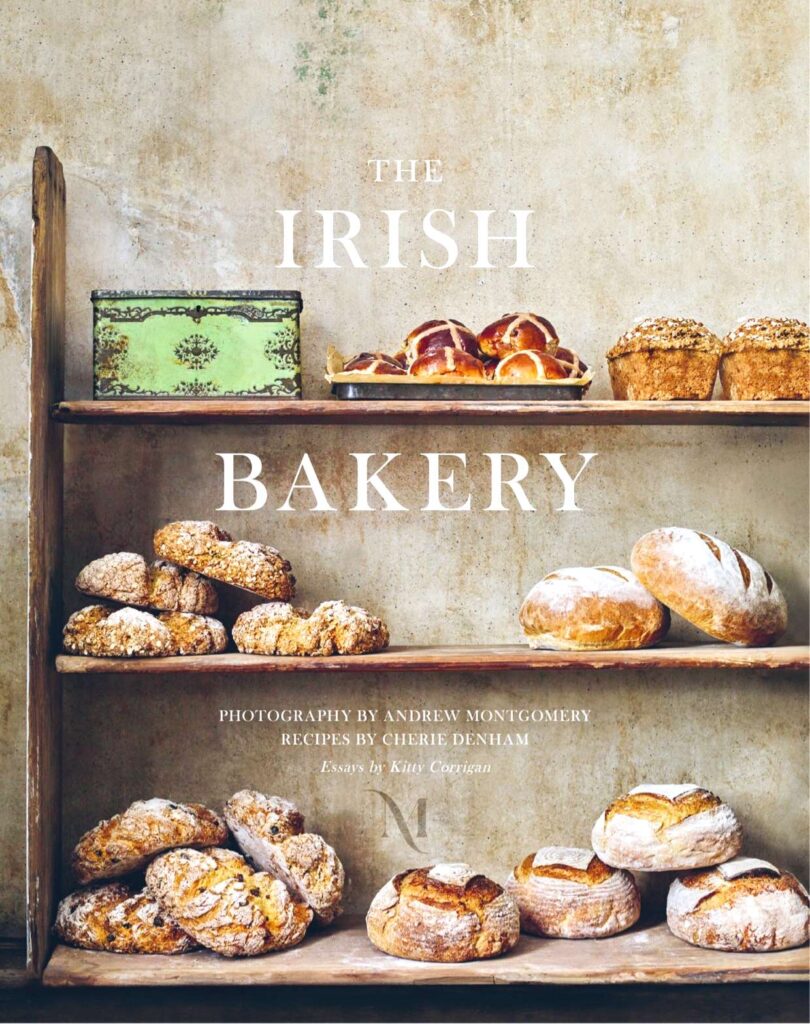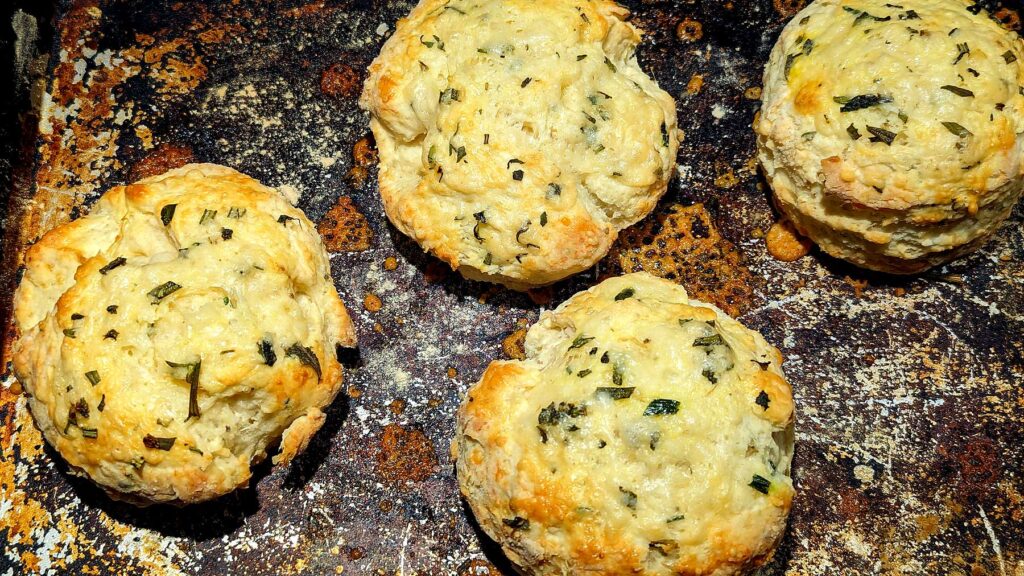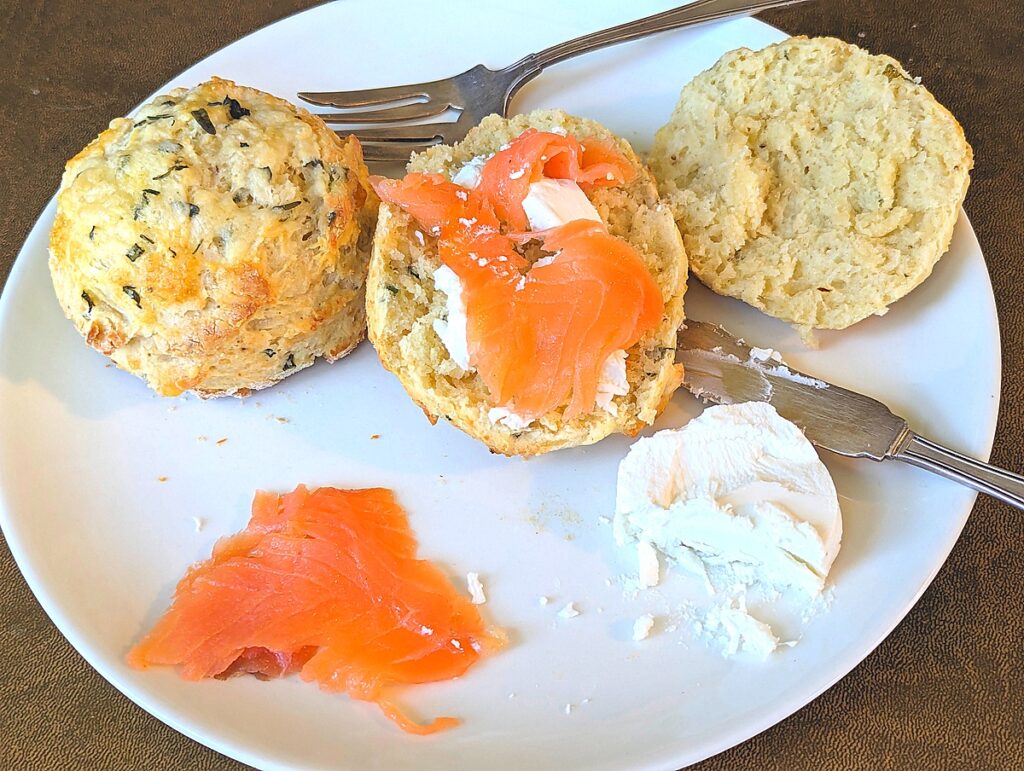
When I learned that baker Cherie Denham grew up in Northern Ireland watching her grandmothers and great aunts baking, I knew that I had to have a copy of the cookbook, The Irish Bakery. My own grandparents emigrated from County Armagh in Northern Ireland to work in the silk mills in Manchester, Connecticut. My mother had fond memories of her mother, Rebecca, standing at the stove cooking triangular soda bread farls on a cast iron skillet. But that was one of her few home cooking memories. Rebecca died young and was never able to teach her three daughters to cook.
Whenever I visited Northern Ireland, I had strict instructions from my mother to bring soda bread farls home in my suitcase so that she and her two sisters could enjoy them for breakfast after church on Sundays. When I visited bakeries and the bountiful displays of baked goods at the St. George’s Market in Belfast, I realized that my cousins and I had really missed out on our heritage of family recipes.
Denham supplied all the recipes for The Irish Bakery, while Kitty Corrigan, another native of Northern Ireland, added essays about the cooks, farmers, millers, wild harvesters, and others who contribute to the region’s foodways. Photographer Andrew Montgomery pulled it all together with artistic and evocative photos. When I opened my copy of the book, I couldn’t decide if I wanted to head to the kitchen or book a flight to Belfast.
Mastering the arts of the Irish oven
I’m not certain if my mother or my aunts would have mastered Denham’s beautiful but complex Elderflower and Strawberry Sponge Cake with Elderflower Cream. But the book is full of dishes that I imagine my family would have eaten if my grandmother had had the chance to pass them on. In addition to the breads and scones, I know they would have loved Chicken and Leek Pie with Shortcrust Pastry or the humble Mince and Potato Pie. We all have a sweet tooth, so the Lemon Drizzle Cake or Flourless Malted Chocolate Cake would have been family celebration staples. Until I read the book, I didn’t realize that County Armagh is known for growing apples. When our New England apples ripen this fall, I’ll try Denham’s Apple Creams, Apple Tart, and Irish Apple Cake with Whiskey Sultanas.
So far, David and I have tried Denham’s Cheese and Mixed Herb Scones. We were motivated by the sudden spring appearance of thyme, rosemary, sage, and tarragon in our community garden. That prompted us to splurge on unsalted Irish butter, which is richer than most American butters. We also spotted a rarely available five-year-old Cabot cheddar to use as the cheese. Like Denham, we ate the scones as a treat for lunch with cream cheese and smoked salmon. They were fabulous. Her recipe is below.
We found the metric measurements by weight more accurate than those by volume. (American flour is heavier than Irish or English.) We also made our own self-rising flour by adding 1/4 teaspoon of fine salt and 1-1/2 teaspoons of baking soda to each cup of flour.
I encourage you to follow Cherie on Instagram at @cheriedenhamcooks and photographer Andrew Montgomery at @montgomeryphoto. Montgomery is also the publisher. To order the book, see https://montgomerypress.co.uk/products/the-irish-bakery.

Cheese and Mixed Herb Scones
These are the ultimate accompaniment to a hearty vegetable soup — a marriage of tangy cheese and herbs strewn through a soft scone. I love them with cream cheese and smoked salmon for a light lunch. They do have to be eaten on the day but are so quick to make — I always whiz the base using my food processor which saves so much time. Fresh herbs and mature Cheddar are essential — you need these for the flavour hit.
MAKES 9 SCONES

- 340 g (12 oz/2-3/4 cups) self-raising (self-rising) flour, plus extra for dusting
- 1/2 teaspoon baking powder
- 1 teaspoon salt
- Pinch of ground black pepper
- 1/4 teaspoon cayenne pepper
- 1/2 teaspoon English mustard powder
- 85 g (3 oz) cold unsalted butter, cubed
- 1 tablespoon chopped mixed herbs (such as rosemary, thyme and chives)
- 140 g (5 oz) mature Cheddar, grated
- 1 egg
- 170 ml (6 fl oz/3/4 cup) buttermilk
For the topping
- 30 g (1 oz) mature Cheddar, grated
- 1/2 tablespoon chopped herbs (such as thyme and chives)
- 1 egg, beaten
Preheat the oven to 200°C (425°F/Gas 7) and dust a baking sheet with flour.
Combine the flour, baking powder, salt, black pepper, cayenne pepper and English mustard powder in a food processor, pulse to combine, then add the butter and pulse again until the mixture resembles breadcrumbs. Alternatively, you can do this with your fingers. Pour into a bowl, then mix in the herbs and cheese.
Mix together the egg and buttermilk, then make a well in the middle of the dry ingredients and pour in the buttermilk mixture. Stir with a knife or spatula to bring the mixture together into a soft dough.
Turn the dough out onto a lightly floured surface and gently roll out to 2.5 cm (1 inch) thick. Using a 6.5 cm (2-1/2 inch) pastry cutter, cut out nine scones and place them onto the prepared baking sheet. Mix together the cheese and herbs for the topping. Brush each scone with the beaten egg and sprinkle with the cheese and herbs.
Bake on the middle shelf of the oven for 12 minutes until golden, then remove from the oven and transfer to a wire rack to cool.
